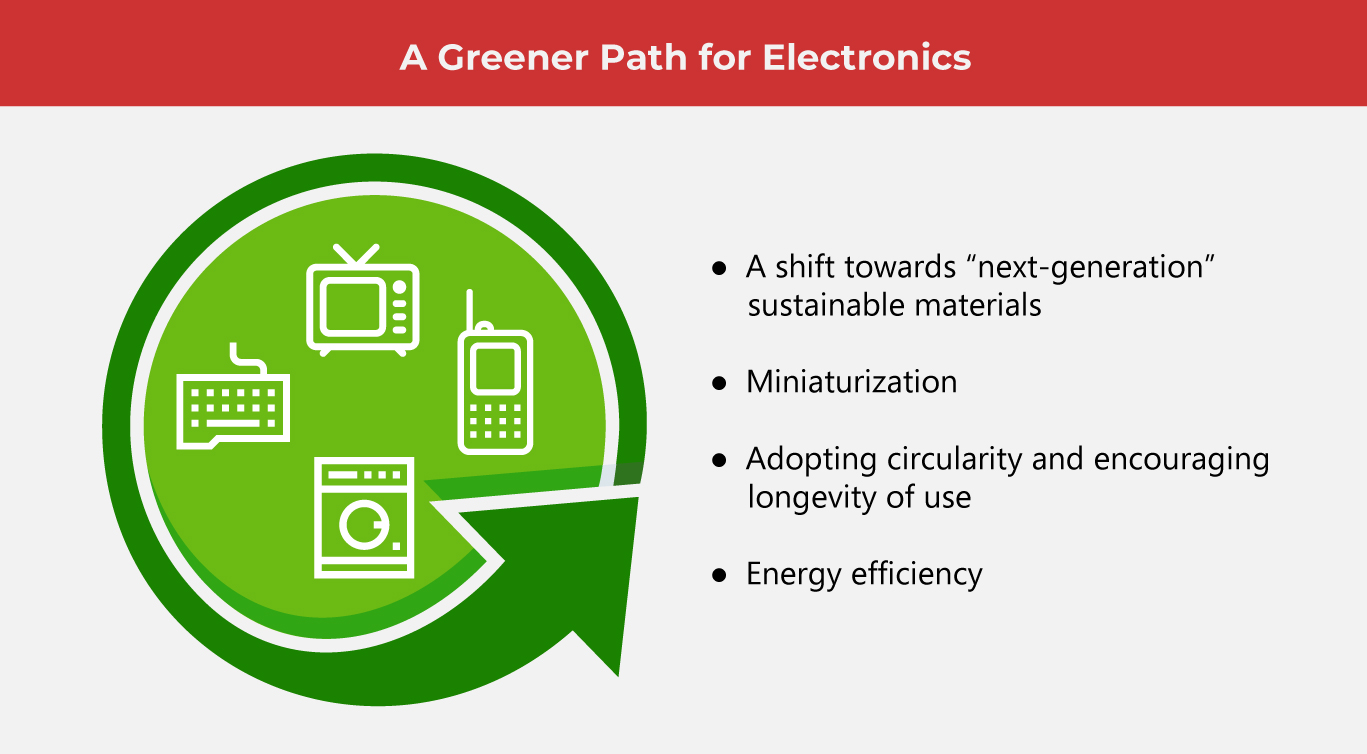How Green Can Electronics Get In 2024?

From new consumer electronics to a shift towards better practices, here’s how the electronics manufacturing industry is pivoting towards sustainability.
Electronic waste, extremely high levels of energy consumption, and a large carbon footprint—these are just some of what gives electronics and electronics manufacturing a bad rap when it comes to sustainability. Rather than pointing fingers and playing the blame game, industry leaders are taking on the challenge to make practices better for the environment.
The electronics manufacturing industry is listening, and shifting to greener practices. In June 2024, researchers, policymakers, and industry leaders came together for EGG, Electronics Goes Green 2024+, a conference focusing on sustainability for the electronics and ICT industries. Plans, ideas, insights, and discoveries towards building more a sensitive and sustainable industry framework were shared to steer electronics towards a greener path.

The Shift to “Next-generation” Sustainable Materials
Forward-thinking electronics is doing away with components and materials that are difficult to recycle and are potentially hazardous or toxic to the environment. Today, researchers are exploring “next-generation” sustainable and biodegradable materials such as bioplastics. These are derived from organic resources and help reduce the carbon footprint.
Chitosan, a type of sugar that comes from the exoskeletons of shellfish such as shrimps, lobsters, and crabs is one example of such an organic resource. It is conventionally used in the manufacture of medicines, but can potentially be used for electronics.
Another example is polylactic acid (PLA), which is derived from fermented plant starch. PLA is becoming more recognized for electronic casing and other non-conductive components.
Several inorganic resources can also be considered “green”. According to Electronic Specifier, aluminum is one of them because it is easily recyclable and has a very long lifespan. Other inorganic materials cited as being more “eco-friendly” are borosilicate glass and graphene, which are used in electronics.
Miniaturization
Miniaturization is one of the most vital innovations in sustainable electronics. EMS Now calls it “getting more for less space and materials, delivering portability, longevity, and energy efficiency gains.”
Even consumers can make the observation that the smaller a gadget gets, the more powerful and “high-tech” it is. From our smartphones to kitchen gadgets, tiny devices can pack a lot of punch. Experts say that miniaturization improves energy storage and therefore makes smaller gadgets more energy efficient.
Adopting Circularity and Encouraging Longevity of Use
Electronic waste is a mounting problem, and the consumer drive to acquire the latest technology may be a contributing factor. Newer models come and go at lightning speed, enabling the disposal of many consumer electronics.
On the other hand, some consumers make good use of the electronic devices they already have and are loathe to part with them, simply because getting newer devices is expensive. Some consumers will hang onto a computer long after its performance and capacity get slower and smaller.
Perhaps there can be a middle ground. Sustainable electronics operate on principles such as “design for disassembly” (DfD) and “design for longevity”.
DfD’s objective is to make disassembly easy at the end of its life cycle, allowing consumers to make use of a device’s components or to repurpose them, for recycling. Meanwhile, design for longevity aims to make more durable products that last longer, are easy to repair, and are upgradable.
These two principles make for better practices for electronics manufacture and consumption. Making devices last longer and easier to upgrade so consumers don’t have to keep replacing them requires a shift from the manufacturer’s side, but implementing it benefits the consumer in big ways.
DfD and design for longevity stop enabling thoughtless disposal of electronic gadgets while optimizing a device long after its intended use and lifespan.
Energy Efficiency
When it comes to sustainability, energy efficiency is top of mind. Sustainable electronics focuses on energy-efficient innovations. When electronic devices are designed for energy efficiency, it contributes to their design for longevity, meaning consumers can use them for longer, and therefore also reduces their carbon footprint.
How a device is powered also contributes to its efficiency. Wearable and portable devices are increasingly becoming thermal or solar-powered, which reduces dependency on plugging in for power or recharging, and at the same time extends the device’s battery life.
 As one of the Top 20 EMS companies in the world, IMI has over 40 years of experience in providing electronics manufacturing and technology solutions.
As one of the Top 20 EMS companies in the world, IMI has over 40 years of experience in providing electronics manufacturing and technology solutions.












